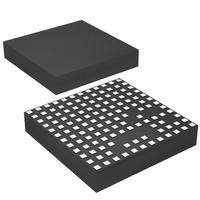LTM4611IV#PBF Linear Technology, LTM4611IV#PBF Datasheet - Page 17

LTM4611IV#PBF
Manufacturer Part Number
LTM4611IV#PBF
Description
IC UMODULE DC/DC LV 15A 133-LGA
Manufacturer
Linear Technology
Series
µModuler
Type
Point of Load (POL) Non-Isolatedr
Datasheet
1.LTM4611EVPBF.pdf
(28 pages)
Specifications of LTM4611IV#PBF
Output
0.8 ~ 5 V
Number Of Outputs
1
Power (watts)
75W
Mounting Type
Surface Mount
Voltage - Input
1.5 ~ 5.5 V
Package / Case
133-LGA
1st Output
0.8 ~ 5 VDC @ 15A
Size / Dimension
0.59" L x 0.59" W x 0.17" H (15mm x 15mm x 4.32mm)
Power (watts) - Rated
75W
Operating Temperature
-40°C ~ 125°C
Efficiency
94%
Lead Free Status / RoHS Status
Lead free / RoHS Compliant
3rd Output
-
2nd Output
-
Available stocks
Company
Part Number
Manufacturer
Quantity
Price
applicaTions inForMaTion
See the Block Diagram for the example of use. When
RUN is below its threshold, TRACK/SS is pulled low by
internal circuity.
INTV
The LTM4611 has an internally regulated bias supply called
INTV
tor internal. This regulator powers the internal controller
and MOSFET drivers. The gate driver current is ~13mA for
500kHz operation and ~20mA for 780kHz operation; the
regulator loss is ~40mW and ~60mW, respectively.
Stability Compensation
The module has already been internally compensated
for all output voltages. Table 5 is provided for most ap-
plication requirements. The Linear Technology µModule
Power Design Tool will be provided for other control loop
optimization.
Thermal Considerations and Output Current Derating
The LTM4611 output current may need to be derated if it
is required to operate in a high ambient temperature or
deliver a large amount of continuous power. Some factors
that influence derating are input voltage, output power,
ambient temperature, airflow, and elevation (air density).
The power loss curves in Figures 7 to 9 and current de-
rating curves in Figures 10 to 16 can be used as a guide.
These curves were generated by an LTM4611 mounted to
a 95mm × 76mm 4-layer FR4 printed circuit board (PCB)
1.6mm thick with two ounce copper for the outer layers
and one ounce copper for the two inner layers. Boards of
other sizes and layer count can exhibit different thermal
behavior, so it is ultimately incumbent upon the user to
verify proper operation over the intended system’s line,
load and environmental operating conditions.
The thermal resistance numbers listed in the Pin Configura-
tion section of the data sheet are based on modeling the
µModule package mounted on a test board specified per
JESD51-9 (“Test Boards for Area Array Surface Mount
Package Thermal Measurements”). The thermal coef-
ficients provided are based on JESD 51-12 (“Guidelines
for Reporting and Using Electronic Package Thermal
Information”).
CC
CC
. This regulator output has a 4.7µF ceramic capaci-
Regulator
For increased accuracy and fidelity to the actual applica-
tion, many designers use finite element analysis (FEA)
to predict thermal performance. To that end, the Pin
Configuration section of the data sheet typically gives
four thermal coefficients:
1. θ
2. θ
3. θ
4. θ
While the meaning of each of these coefficients may seem
to be intuitive, JEDEC has defined each to avoid confusion
and inconsistency. These definitions are given in JESD
51-12, and are quoted or paraphrased in the following:
1. θ
2. θ
3. θ
tom of the product case.
product case.
circuit board.
thermal resistance measured in a one cubic foot sealed
enclosure. This environment is sometimes referred to
as “still air” although natural convection causes the
air to move. This value is determined with the part
mounted to a JESD 51-9 defined test board, which does
not necessarily reflect an actual application or viable
operating condition.
with all of the component power dissipation flow-
ing through the bottom of the package. In the typical
µModule, the bulk of the heat flows out the bottom of
the package, but there is always heat flow out into the
ambient environment. As a result, this thermal resistance
value may be useful for comparing packages but the test
conditions don’t generally match the user’s application.
power dissipation flowing through the top of the pack-
age. As the electrical connections of the typical µModule
are on the bottom of the package, it is rare for an ap-
plication to operate such that most of the heat flows
from the junction to the top of the part. As in the case
of θ
packages but the test conditions don’t generally match
the user’s application.
JA
JCbottom
JCtop
JB
JA
JCbottom
JCtop
: thermal resistance from junction to the printed
: thermal resistance from junction to ambient.
is the natural convection junction-to-ambient air
JCbottom
: thermal resistance from junction to top of the
is determined with nearly all of the component
: thermal resistance from junction to the bot-
is the junction-to-board thermal resistance
, this value may be useful for comparing
LTM4611
4611f













